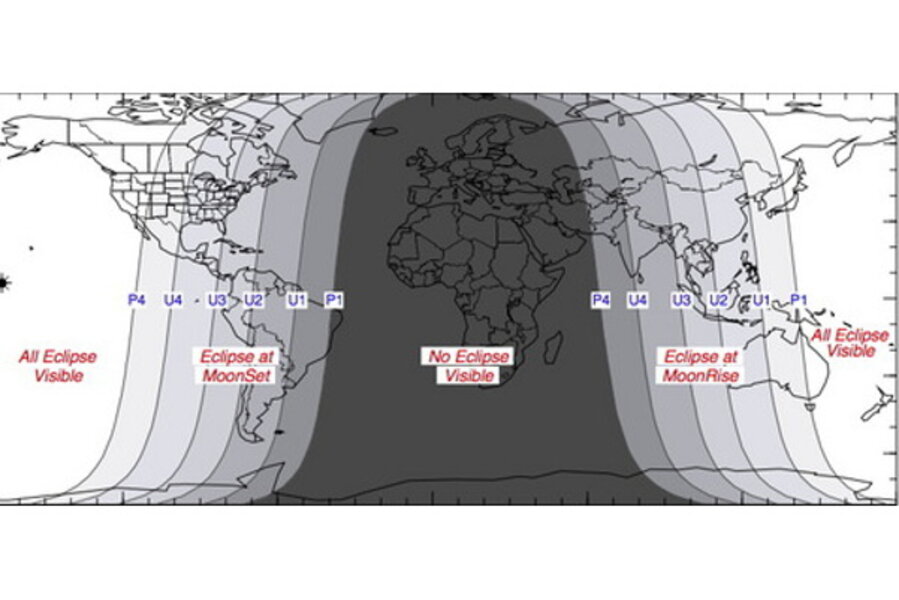Blood moon returns: Another total lunar eclipse will color the moon blood red
Loading...
Skywatchers across much of the world will have the chance to see the moon glowing with an eerie red pallor during a pre-Halloween total lunar eclipse next week.
The "blood moon" total lunar eclipse will rise during the full moon of Oct. 8 just before sunrise in North America, but red might not be the only color people see during the total eclipse. Weather permitting, it's possible that some sharp-eyed observers might be able to see some blue in the moon's glow. The event will be the second of four consecutive total lunar eclipses in 2014 and 2015, according to NASA officials.
On the East Coast of the United States, totality starts at 6:25 a.m. EDT, but stargazers on the West Coast of the United States will have an even better chance of seeing the rusty glow of the moon during totality. The eclipse will occur between 3:25 a.m. PDT and 4:24 a.m. PDT Wednesday. Observers in Australia and countries along the Pacific Ocean will also have the chance to see the eclipse. [
"It promises to be a stunning sight, even from the most light-polluted cities," NASA eclipse expert Fred Espenak said in a statement. "I encourage everyone, especially families with curious children, to go out and enjoy the event."
A total lunar eclipse tetrad
Next week's eclipse is the second in a so-called total lunar eclipse tetrad, a series of four consecutive eclipses that began earlier this year. The first total eclipse tetrad occured in April. The next total eclipse in the series will occur on April 4, 2015, and the fourth eclipse will rise on Sept. 28, 2015.
During total lunar eclipses, the moon passes into Earth's shadow, causing the planet to darken the face of the moon, according to NASA. Instead of making the moon go completely dark, the moon shines with a rosy hue during a total eclipse because it reflects light from the sun coming through Earth's atmosphere.
The color of the moon during a lunar eclipse actually depends on Earth's atmosphere. For example, a lot of volcanic activity on the planet can pollute the atmosphere and make the moon seem very dark in color during an eclipse, according to NASA.
"Despite some recent eruptions that look spectacular from the ground, there have been no large injections of volcanic gases into the stratosphere," atmospheric scientist Richard Keen of the University of Colorado said inthe same statement. "In the absence of volcanic effects, I expect a rather normal reddish-orange lunar eclipse similar in appearance to last April's eclipse."
Blue hues on the moon?
Red isn't necessarily the only color skywatchers see during a lunar eclipse. Some observers have claimed to catch a hint of turquoise in the moon's color as well. The sun hitting the upper stratosphere, Keen said, can explain this odd color contrast.
"During a lunar eclipse, most of the light illuminating the moon passes through the stratosphere, where it is reddened by scattering," Keen said. "However, light passing through the upper stratosphere penetrates the ozone layer, which absorbs red light and actually makes the passing light ray bluer."
The blue color — which can sometimes be seen on the rim of Earth's shadow against the moon — is best observed through a small telescope or binoculars during the first and last moments of totality, Keen added.
Lunar eclipses only fall on full moons and usually occur about twice a year. The moon's orbit is somewhat off-kilter, so instead of getting an eclipse every month, observers on Earth only see a lunar eclipse when the planet's shadow is favorably aligned with the natural satellite's orbit.
Editor's Note: If you snap an amazing picture of the Oct. 8 total lunar eclipse, you can send photos, comments and your name and location to managing editor Tariq Malik at spacephotos@space.com.





